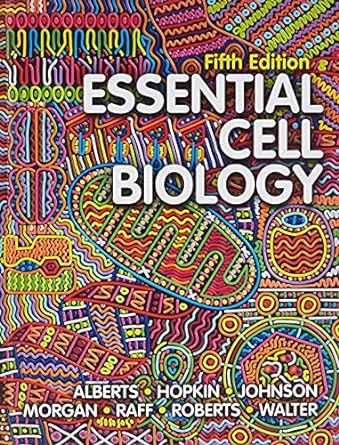Description
Test Bank For Essential Cell Biology 5th Edition
CHAPTER 1 Cells: The Fundamental Units of Life
UNITY AND DIVERSITY OF CELLS
1.1.a Compare, with examples, some ways in which cells may vary in appearance and function.
1.1.b Outline, with examples, ways in which cells share a basic fundamental chemistry.
1.1.c Explain how the relationship between DNA, RNA, and protein—as laid out in the central dogma—makes the self replication of living cells possible.
1.1.d Summarize how the processes of mutation and selection promote the gradual evolution of individuals best suited for
survival in a wide range of habitats.
1.1.e Explain how differentiated cell types can vary widely in form and function despite having the same genome sequence.
CELLS UNDER THE MICROSCOPE
1.2.a List the three tenets of cell theory and explain their ramifications for the study of cell biology.
1.2.b Contrast light microscopy, super-resolution fluorescence light microscopy, and electron microscopy in terms of the
cell components that can generally be distinguished using each.
1.2.c Compare how samples are prepared for light versus electron microscopy and explain how these preparations affect
whether the technique can be used for viewing living cells or tissues.
THE PROKARYOTIC CELL
1.3.a Describe the structural differences between prokaryotes and eukaryotes.
1.3.b Analyze how eukaryotic cells and organisms rely on the function of prokaryotic cells and their descendants.
1.3.c Compare prokaryotes and eukaryotes in terms of their relative preponderance on Earth, their range of habitat, and
their tendency toward multicellularity.
1.3.d Justify the division of prokaryotes into bacteria and archaea.
THE EUKARYOTIC CELL
1.4.a State the function of the nucleus and describe its structural features.
1.4.b Explain how the structure of the mitochondrion supports its function.
2 | Chapter 1
1.4.c Outline the evolution of mitochondria and chloroplasts and cite the evidence for these origins.
1.4.d Explain how chloroplasts and mitochondria cooperate as plant cells convert light energy into chemical energy.
1.4.e Compare the function of lysosomes and peroxisomes.
1.4.f Compare the structure, location, and function of the endoplasmic reticulum and Golgi apparatus.
1.4.g Outline the role that transport vesicles play in endocytosis, exocytosis, and the movement of materials between one membrane-enclosed organelle and another.
1.4.h Relate the location of the cytosol with respect to the cell’s membrane-enclosed organelles.
1.4.i List the three major filaments of the cytoskeleton and contrast the roles they have in animal cells.
1.4.j Outline the role the cytoskeleton has in plant cells.
1.4.k Describe the ancestral cell that likely engulfed the aerobic bacteria that gave rise to mitochondria and explain why this event is thought to have preceded the acquisition of chloroplasts

Reviews
There are no reviews yet.